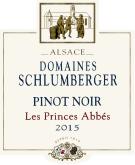History
It is undoubtedly the first pinot grape variety imported from Burgundy, no doubt because of the similarities in topography and climate between Burgundy and Alsace. This prestigious red grape variety was prominent in Alsace in the middle Ages, but then disappeared, except for certain places where red wine was still appreciated. It is becoming increasingly popular today because of its freshness and fruitiness.
Location
80% comes from the limestone Bollenberg plot and 20% comes from the marl-limestone Saering plot.
Wine-making
Its vinification occurs during a maceration of 2 weeks. Its growth in traditional tuns for 10 months allows adding a more full-bodied and more complex structure to its typical fruitiness.
Gastronomy
I recommend serving this wine with white flesh meats, for exemple, a rack of veal in its juice with potato puree. Poultry fricassee with Paris mushrooms or a traditional pot-au-feu. Temperature of service 16°C.
Learn more about food & wine pairingTasting
The robe is ruby red with purple highlights and of good intensity. The disk is limpid, bright and transparent. The wine shows youth. The nose is marked, pleasant, of good intensity. We perceive a distinguished dominant of smoked and spicy scents, as well as a delicate reduction.
The nose is pleasant, profound and has achieved ideal maturity. Still a bit tight, time will be a good ally. The onset in the mouth is ample and shows a nice silky touch. The alcohol support is balanced. The wine evolves on a medium with a soft but pleasant vivacity. The finish shows a very full-bodied wine. The range of flavours is articulated around spices and liquorice. Still with reduction and smoky notes. The tannin structure is supple, slightly astringent. The finish has a good length. The balance of this wine is elegant. Its structure is compact and marked by silky tannin.
Technical sheet by M. Pascal Leonetti
“Best Sommelier of France 2006”
















